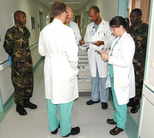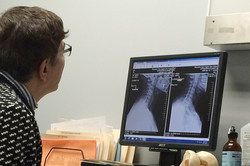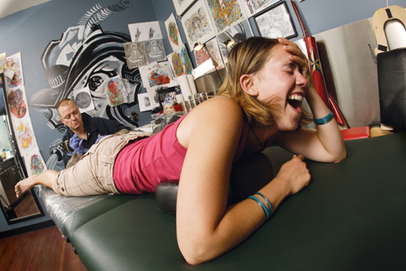- Home
- About Us
- TSPT Academy
- Online Courses
-
Resources
- Newsletter
- Business Minded Sports Physio Podcast
- Day in the Life of a Sports PT
- Residency Corner
-
Special Tests
>
-
Cervical Spine
>
- Alar Ligament Test
- Bakody's Sign
- Cervical Distraction Test
- Cervical Rotation Lateral Flexion Test
- Craniocervical Flexion Test (CCFT)
- Deep Neck Flexor Endurance Test
- Posterior-Anterior Segmental Mobility
- Segmental Mobility
- Sharp-Purser Test
- Spurling's Maneuver
- Transverse Ligament Test
- ULNT - Median
- ULNT - Radial
- ULNT - Ulnar
- Vertebral Artery Test
- Thoracic Spine >
-
Lumbar Spine/Sacroiliac Joint
>
- Active Sit-Up Test
- Alternate Gillet Test
- Crossed Straight Leg Raise Test
- Extensor Endurance Test
- FABER Test
- Fortin's Sign
- Gaenslen Test
- Gillet Test
- Gower's Sign
- Lumbar Quadrant Test
- POSH Test
- Posteroanterior Mobility
- Prone Knee Bend Test
- Prone Instability Test
- Resisted Abduction Test
- Sacral Clearing Test
- Seated Forward Flexion Test
- SIJ Compression/Distraction Test
- Slump Test
- Sphinx Test
- Spine Rotators & Multifidus Test
- Squish Test
- Standing Forward Flexion Test
- Straight Leg Raise Test
- Supine to Long Sit Test
-
Shoulder
>
- Active Compression Test
- Anterior Apprehension
- Biceps Load Test II
- Drop Arm Sign
- External Rotation Lag Sign
- Hawkins-Kennedy Impingement Sign
- Horizontal Adduction Test
- Internal Rotation Lag Sign
- Jobe Test
- Ludington's Test
- Neer Test
- Painful Arc Sign
- Pronated Load Test
- Resisted Supination External Rotation Test
- Speed's Test
- Posterior Apprehension
- Sulcus Sign
- Thoracic Outlet Tests >
- Yergason's Test
- Elbow >
- Wrist/Hand >
- Hip >
- Knee >
- Foot/Ankle >
-
Cervical Spine
>
- I want Financial Freedom
- I want Professional Growth
- I want Clinical Mastery
|
Those of you who are familiar with Shirley Sahrmann's work on the upper quarter are likely familiar with how scapular positioning can impact cervical mobility and pain. With downwardly rotated and depressed scapula, the upper trapezius, in addition to other cervical musculature, is placed on stretch providing a compressive force to the cervical spine, limiting cervical mobility and potentially causing pain. This can be assessed by providing support to the shoulder girdles and reassessing the motion and pain levels. When positive, treatment should include this kind of support for the UE's. This can be done by keeping the arms supported throughout daily life by crossing arms when standing or walking, adjusting arm rests to appropriate height, and avoiding carrying anything heavy. Exercises can be performed by using pillows to supports the UE's when strengthening the parascapular muscles or retraining cervical motion. Stretching of the upper trapezius should be avoided as it may further rotated the scapulae downwardly, thus increasing the compressive force. Check out the video below to see for yourself! -Chris
1 Comment
 As medical providers, the line between competence and confidence is crossed everyday. In your 'strong topics,' it is easy to be competent. When a patient asks a question regarding their knee pathology, you likely knows the anatomy, type of tear, and treatment progression. But what if the patient asks a question regarding a new knee surgery that he has been reading about? As the expert, you should be knowledgeable regarding the procedure, but maybe you have forgotten to open the past few editions of JOSPT. How do you respond to the question? After working with several students, it is clear that confidence is nearly as important as competence. In the example above, you may not have the entire answer, but the demeanor in which you present yourself completely changes the context of the answer. In several situations, a student has answered a patient's question, and the patient turns to me to get a second opinion. Almost always, the students answer is correct. The patient wants a second opinion because he knows the student was hesitant in his/her response. Ideally, confidence and competence would grow together- the more you learn, the more confident you become. Realistically, it takes multiple repetitions in the clinic to become confident in your interactions with patients. Building trust in the patient can be a difficult task. You must be honest with your patients, but your demeanor can greatly change the outcome of the patient interaction. The video below is not physical therapy related, but it sends a good message regarding body language. How do you carry yourself? What is your body language in the clinic? How is your body language affecting your patient interactions? Last week I wrote a post regarding imaging results and educating patients on modern pain science. It is definitely a difficult task, and one of my weaker areas in the clinic. A few of you commented with some very helpful tips, one of which being Dr. E. Dr. E is the author of The Manual Therapist blog, but also has a separate blog dedicated to pain education, known as stopthoughtviruses.com. It includes links to recent articles and posts related to pain science, a resource of books regarding the topic, and a program for treating chronic pain. Check it out!
-Chris  We all have the patients that are obsessive over their diagnostic imaging findings. They are fearful for you to even evaluate them without reading their MRI reports. Some of the most distressing words we hear as clinicians can be, "have you seen my imaging reports?" Immediately, the patient is at risk for becoming a slow responder due to the presence of perceived threats from the reports. Recently, I had a patient who had an MRI that revealed some disc herniation in her lumbar spine. I tried to educate both the patient's family and another involved health care practitioner on how disc abnormalities can be normal in teenagers and twenty-year-olds as many are asymptomatic with those same problems. No matter what I said, there was a level of fear in that patient's family (likely heightened by the confirmation from the other practitioner) that could not be shaken. Recently, a study came out showing just how common disc bulges can be. Between 70-78% of asymptomatic individuals in their twenties have a disc bulge in their cervical spine. This further increases the evidence of how it is a normal aging process. The fear instilled by imaging can be difficult to treat. It is by far my weakest area as a physical therapist. I used to think it would apply to a small population, but it appears to become ever more important with the progression of pain science. I currently am reading Therapeutic Neuroscience Education and have read Explain Pain in order to develop my methods of educating patients on pain science. What other sorts of resources or methods do you use in this area? -Chris What does PT stand for? Pain and Torture OR Physical Torture. Wrong!
I recently have had this conversation with several patients that "no pain, no gain" is not the appropriate model for physical therapy practice. Patients often come into my doors with scared emotions. They have heard stories about physical therapy being painful. They know physical therapy will make them better, but believe this healing comes at the cost of torture. As physical therapy practitioners, we need to change this belief system. We know the pain-for-gain model should not be promoted anymore. In instances of acute pain, the brain is telling the body something is painful for a reason. Pushing beyond the point of pain can trigger an inflammatory response resulting in increased tissue injury or prolonged soreness. From a psychosocial perspective, the perception of pain has a negative connotation. Pain can lead to a fear of movement, protective guarding, and a lack of trust in the therapist. If individuals associate therapy with fear and negativity, they are likely to have a slower response to treatment. So how can we change this belief? The information I give to many patients is that they should feel 'better, looser, or less pain' by the time they leave each session. If not, I am not doing my job. While stretching, strengthening or performing mobility exercises, I tell patients to go to the point of pain and then back off. Soreness or discomfort may arise as you are gaining back your strength and ROM, but these symptoms should be temporary. Therapy is not intended to be painful. We are doing our patients and profession a disservice if we do not properly educate people about therapy and pain. -Jim As many of you know, I have been using repeated motions to treat any "sciatic nerve" pain that I've had in the last year. I rarely ever notice any discomfort in the area, and it dissipates immediately with 10 repetitions of sideglides or lumbar extensions. While studying for the OCS last week, I thought I'd test my Active SLR bilaterally to see the difference due to my history of "nerve pain" on that side. There was a difference present and thought it would be interesting to have a video showing how what appears to be "flexibility deficits" can actually be secondary to neural tension, and thus, easily changed. Check out the video below to see a quick assessment and treatment with rapid changes. Normally, an evaluation would be much more thorough, but this is a quick view of how to break down the Multi-Segmental Flexion test and view rapid changes. For more videos like this, check out the Premium Page! -Chris  Coming out of school to enter the clinical world, it typically doesn't take long to realize that quite a bit was missing from our PT school education. It's not the school system's fault as we are prepared to be generalists not specialists when we begin. It is through regular clinical practice and continuing education that we further develop our knowledge and skills. There is a lot to choose from, so how do you know where to begin? Ideally, everyone would do a residency/fellowship program. These programs are some of the easiest ways to begin specialization and increasing your confidence and competence in the clinic. The regular coursework and mentoring involved keep challenging and developing your skills. While it would be nice for everyone to pursue these, it takes a significant time and financial commitment, so I understand why many do not complete them. Instead, many far more frequently choose a weekend course or two every year to attend. This can be an excellent way to regularly grow as a clinician, but not all courses are as beneficial. I recommend courses that teach your a system or are pretty encompassing in an area. For example, one of my early continuing education classes was Selective Functional Movement Assessment Level 1 (SFMA). It played a huge role in my examinations for assessing movement. Courses focusing on a joint for evaluation and treatment can be beneficial. Even though I had a blast when I attended Combined Sections, I'm not sure how useful it is clinically. You go to a bunch of different classes where maybe you get an update on some research, but is generally just a taste of the topic. Another way that is pretty easy and relatively inexpensive is following blogs and subscription services. Check out our Favorites Page for a list of blogs that we follow. You have access to the minds of many different clinicians that can help develop you knowledge and they are typically free! For a relatively small price, you can subscribe to some services for additional content. Rehab Webinars offers regular web- or podcast-based lectures by some of the described experts in the field. Medbridge offers a wider variety of courses as well, and some companies will pay for membership. These easy to access services can completely alter how you deliver care. Personally, I use Medbridge and The Manual Therapist's subscription services regularly. My clinical reasoning and skills have been impacted by following these services almost as much as my residency completion, and at a far lesser cost. For our Premium Page followers, we offer videos, podcasts, lectures, and more on different skills and topics that we have learned in our sports/ortho residencies, fellowships, and more. If you are looking for a way to significantly alter your practice for the better, check out some of these options. -Chris |
Dr. Brian Schwabe's NEW Book in partner with PaleoHacks!
Learn residency-level content on our
Insider Access pages We value quality PT education & CEU's. Click the MedBridge logo below for TSPT savings!Archives
July 2019
Categories
All
|







 RSS Feed
RSS Feed